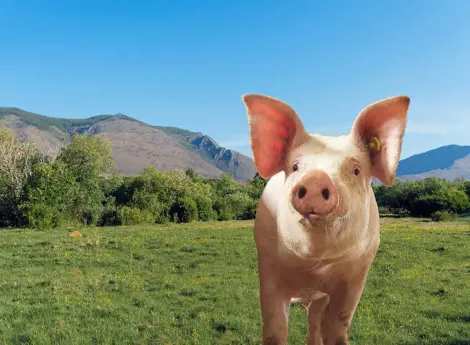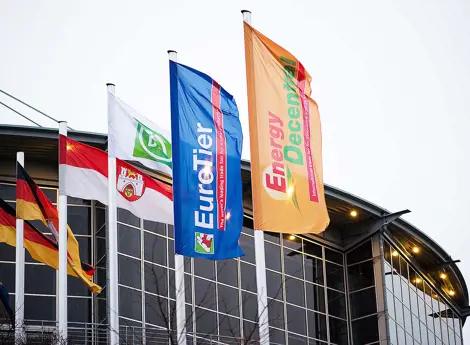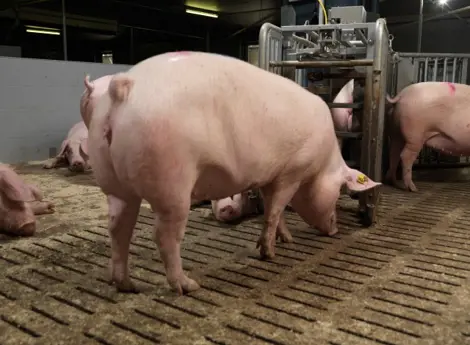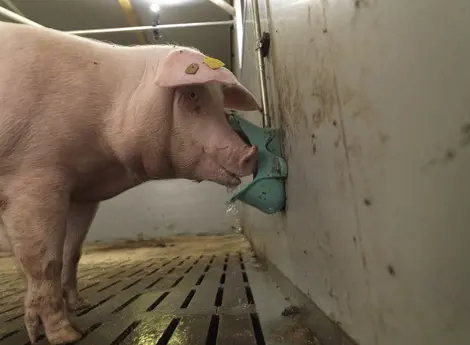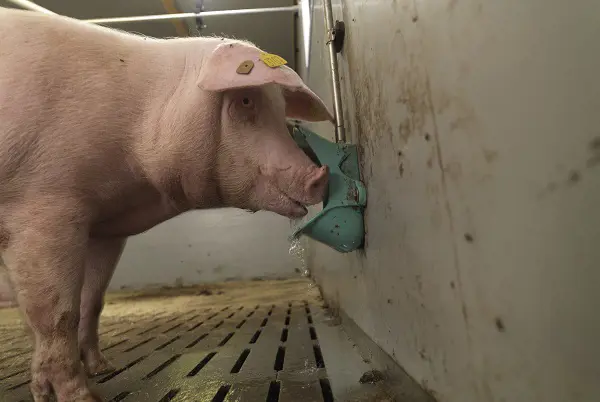
Management
- Check the ventilation system and the emergency power generating set.
- Ensure that the sows are in good condition: Avoid having sows that are too fat to prevent limited feed intake in the farrowing room and avoid having sows that are too lean that have no reserves left when high temperatures result in a low feed intake.
- Take a proactive approach towards fly control in order to prevent a fly infestation
- Ensure a calm surrounding in the pig barn during the hottest period of the day.
- Extend feeding times: earlier in the morning and later in the evening.
- Take semen and pipettes into the barn in a cooler.
- Provide at least sixteen hours of light in the barn and a maximum of eight hours of darkness to prevent autumn abortion syndrome.
Water
- Check the water yield of the drinking nipples (gestation 0.8 l/min, farrowing room 2.0 l/min, piglets 0.6 l/min).
- Extend the time during which water is provided to pregnant and breeding sows.
- Give extra water around the time of farrowing (three days before and three days after).
- Lower the concentration of dry matter in liquid feed.
Feed
- Check to confirm that the winter correction has been removed from the feed schedule
- Prevent residual feed in the troughs to order to prevent decay.
- Lower the feed supply during days with tropical temperatures in order to keep the pigs ravenous.
- Add Vitamin C to the drinking water for the growers
Hygiene
- Take additional measures to prevent the feed from fermenting.
- Allow silos to empty out; check and clean them before re-filling
Climate
- Clean fans and ducts, filters, openings for bottom exhaust and the ventilation ceiling.
- Increase the ventilation's P-band settings.
- Increase the minimum temperature by 2°C.
- Keep the air intake out of the sun.
- When the forecast calls for very hot weather, allow the temperature in the farrowing room to slowly increase in advance in order to enable the sows to acclimatise.
Impact on Sows
The feed intake in the farrowing room decreases by 2.8 kg per day when the temperature rises from 20 to 29 degrees Celsius. The sows produce less milk causing weaning weight to decline. Furthermore, the sows' condition deteriorates. The sows exhibit less hogging and there are more unfertilised sows.
Growers
At very high temperatures grower pigs take in less feed causing them to grow slower. Pigs provided ad libitum feed may compensate for this at a later stage as a result of which they generate more back fat. The growth and meat ratios end up being lower. Proactively taking measures during the summer certainly is worth the effort. This makes it possible to limit the negative effects of the hot weather.

